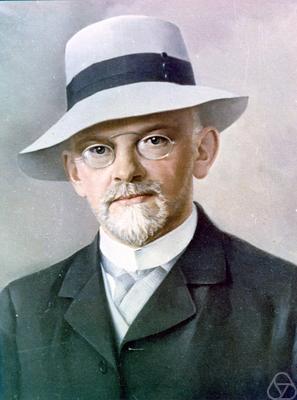This is me too. There is is fantastic programme on our BBC Radio 4 called
In Our Time Which takes a subject and runs with it for 45 minutes, the presenter Melvyn Bragg and a couple of experts in a studio talking. Could be anything, recent ones have been Frida Kahlo, Alexander The Great and Perpetual Motion, but there's been loads of maths ones - Pythagorus, Infinity, Zero, Fermat's Last Theorum. I love this programme, but the maths ones I absorb at the time but it's like a fleeting understanding. I hope something gets into my head but I struggle too!
Fermat's Last Theorem was first conjectured in early 17th century by a French lawyer Pierre De Fermat, whose hobby was math. We'll go far back now. Pythagorus' theorem says that a triangle is right if and only if a^2 + b^2 = c^2, a, b, c being its sides. Are there any integers that satisfy the equation? Yes, there are infinetely many and they're called Pythagorean triplets. The first is 3, 4, 5. Fermat raised a question whether there are integers a, b, c satisfying the equation a^n + b^n = c^n, n being a given integer greater than 2. He himself solved it for n = 4, there aren't any, except trivial ones, like 0, 0, 0, Euler solved it for n = 3 (more or less, Gauss corrected an error), there aren't any, but the first step towards a general solution was givan by Sophie Germain. Ernst Eduard Kummer took it further and showed there are no solutions if n is the so-called regular prime:
https://en.m.wikipedia.org/wiki/Regular_prime
https://en.wikipedia.org/wiki/Regular_prime
A prime number is a positive integer that's divisible only by 1 and itself. It took another 150 years before it was shown that FLT reduces to the so-called Taniyama-Shimura-Weil conjecture, which was finaly proven by Andrew Wiles in 1995, after he locked himself in a room for 7 years. in '94 he thought he had it, but after he called Richard Taylor, the latter found an error in half an hour. The two finaly acomplished it in '95.


